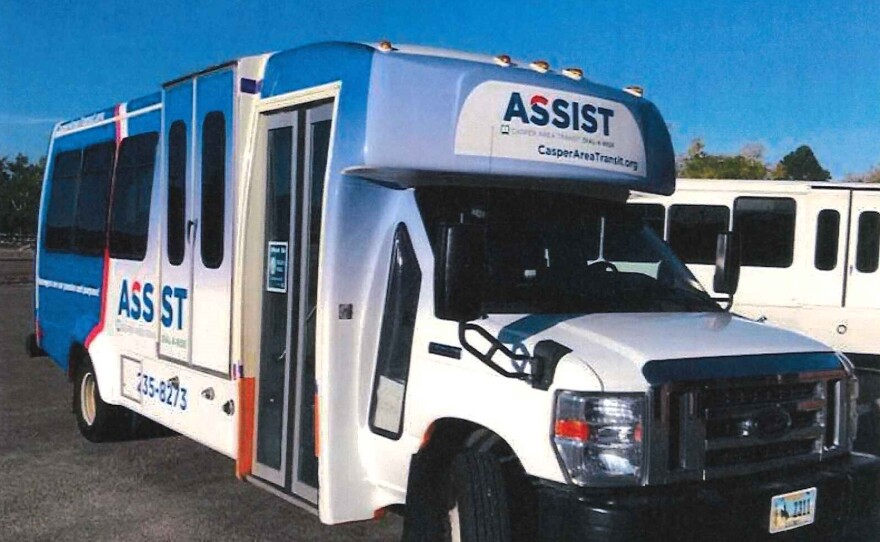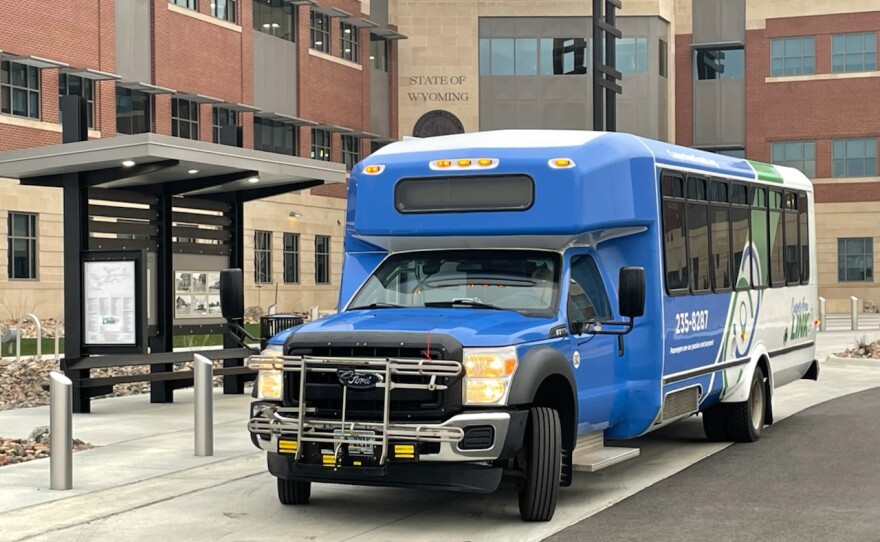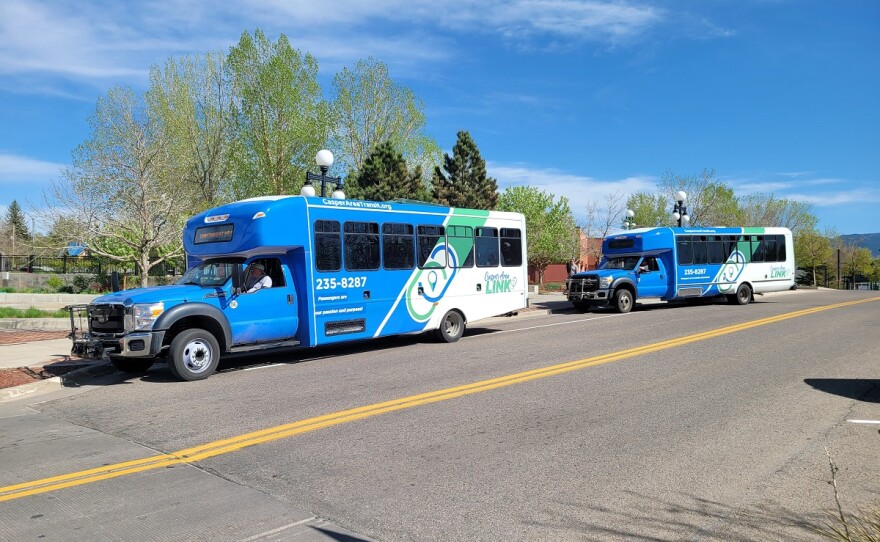The City of Casper is in the early stages of formulating a plan to transition its city buses to electric. The potential transfer could take years to fully implement.
The city says rising fuel prices among other facts have contributed to the consideration.
“Certainly, that is something that we’re seeing within the last three months is when those prices have gone up certainly,” said Scott Dresher, Public Transit Manager with the City of Casper. “Also, the infrastructure bills that have come through with the new administration, part of their emphasis has been on electric vehicles and that goes for transit and other industries as well.”
There are currently 23 vehicles that make up the fleet and range in capacity from 16 to 30 passengers. Buses operate on six fixed routes and seven assist, or non-fixed routes that offer door-to-door service. Additionally, there are 32 full-time city staff that are assigned to the bus fleet. The city allocates around $3 million annually to its transit division, which also serves residents in Evansville, Mills, and Bar Nunn.
Dresher emphasized any transition will be gradual. The city is looking for an organization that will conduct a study as to the costs and feasibility of a switch, which could take place in the next few months. Dresher also said the technology for fully electric vehicles, especially for larger vehicles such as buses, still isn’t in a truly reliable place.
“It’s a slow-going process and obviously we want to take it as deliberately as we can without overstepping things and getting in early on the technology would be nice but as it develops, you may get in too early and end up with something that won’t be as good in the long run,” he explained.
Many of the buses in the fleet are over a decade old. Three traditional fueled buses have been ordered but have experienced delays due to issues with the supply chain.
Funds for electric buses could potentially come from the one percent optional sales tax. This would help to cover the costs to cover matches to receive funding via grants and would also assist with maintenance costs.
Dresher said that the bus system is becoming more popular, and that ridership increased during the pandemic. Around 160 to 180 passengers currently ride the bus daily.
“Demand [has] certainly gone up, [and] we'll get three or four calls a day, about what it takes to sign up for the assist, the door-to-door things,” Dresher said. “As far as the ridership goes, we certainly have seen it go up. And then as far as the fixed routes, we end up with full buses a lot of times and some days, we'll drive around with just a few people. But it just kind of depends.”
There have been no proposed fare increases as federal authorities expect municipalities to keep fares low for riders. Alist of routes, fares, and transportation services can be found on the city’swebsite.











